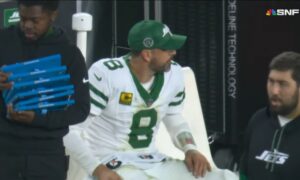They say you can’t judge a draft class until after the players have had a few years in the league. No fan base knows that as well as the Pittsburgh Steelers, who have had to routinely wait to see the team’s draft picks get playing time on the field in a capacity other than special teams.
The rules have been changing on that front, of course, in recent years, with the Steelers playing younger players more frequently, whether by force or by design. Either way, with the 2014 over, now is the time to look back at the team’s most recent draft class and take stock of how their first season as a group of professionals went.
The Steelers entered the draft process with a total of nine selections, including three compensatory selections. They were left without their natural third-round draft pick in 2014 due to the fact that they traded it to the Cleveland Browns in the fourth round in order to select safety Shamarko Thomas.
Pittsburgh was able to recoup that lost third-round selection due to the loss of wide receiver Mike Wallace in free agency, giving them the 33rd pick in the third round, the highest compensatory pick. They also received two additional picks in the fifth and sixth for a variety of free agency losses and gains the year prior.
For the second year in a row, the Steelers used their first-round draft pick not just on the defensive side of the ball, but at the linebacker position. After selecting outside linebacker Jarvis Jones 17th overall in 2013, they added inside linebacker Ryan Shazier last spring with the 15th overall draft selection.
But Pittsburgh continued the defensive theme, responding to free agency losses along the defensive line by adding a very promising young defensive end prospect in Stephon Tuitt. They closed out the second day of the draft process by giving the offense a nod with the selection of running back Dri Archer.
To kick things off on day three, the Steelers got their best value of the draft by taking wide receiver Martavis Bryant in the fourth round, but more on that later. With four picks over the next two rounds, they added cornerback Shaquille Richardson, offensive lineman Wesley Johnson, linebacker Jordan Zumwalt, and nose tackle Daniel McCullers, closing out the draft with tight end Rob Blanchflower in the seventh.
Of those nine selections, only six ended up making the initial 53-man roster. Richardson was placed on the practice squad and later waived injured; Zumwalt was placed on injured reserve; Blanchflower spent the year on the practice squad.
During the season, the Steelers released Johnson to make room on the roster, and the New York Jets claimed him off waivers before Pittsburgh could add him to the practice squad. In all, then, seven of the nine members of the draft class remain with the team.
To recap the season, Shazier was given the keys to the starting mack position immediately, but a series of injuries kept him off the field and limited his production. After struggling to get on the field early, Tuitt ended up in the starting lineup over the last five games.
Unable to find snaps behind Le’Veon Bell, Archer was never able to carve out a role for himself, but he also disappointed as a returner on special teams. But Bryant was a revelation after being inactive the first six games, catching nine touchdowns in his 11 games active.
Of the remaining five selections, only McCullers was able to contribute in any capacity, and he did so with mixed success, playing well, however, in the playoff game while seeing his highest snap count.
Of course, there’s still a great deal more to be written in the story of this draft class. This is but the opening chapter.







